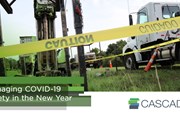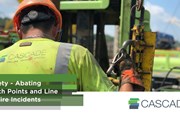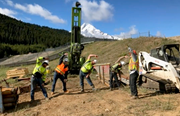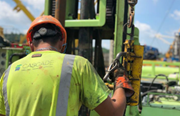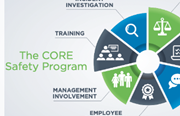Set Your Safety Resolutions for the New Year
By: Dale DuscherThe start of the new year kicks off for many of us with a set of resolutions, either things we would like to improve or bad habits we would like to kick. This tradition can be helpful for anyone wishing to make changes in the new year—whether an individual or organization is making them. If you are interested in creating a safer work environment for your team in 2019, it might be time to develop your safety new year’s resolutions.
USE DATA TO SELECT YOUR GOALS
The environmental services and drilling industry has inherent risk, which is why it’s vital to create and maintain a strong safety culture. But to do so, you need to be able to know your baseline, as well as track if you’re making progress or losing ground. Fortunately, there are many metrics that can be used to decipher safety performance and help determine which resolutions to put into place.
Consider some common metrics for tracking, including TRR’s, CIR’s, EMR’s JSI’s, C3PO’s, DFA’s, OFA’s, and MVI’s. Based on your existing data, you’ll want to select and prioritize a few key areas for improvement and determine reasonable and attainable goals for the year.
SET THE BAR
Setting the bar too high is not a good idea when determining new year’s resolutions, as it can discourage people from even attempting to reach it. However, if we don’t challenge ourselves at all, we are only meeting goals we have purposefully shrunk down to minimize effort.
For example, if only one employee got hurt on a job site, would we consider the safety program was successful? No, of course not. All injuries are preventable, so avoid the trap of setting the bar too low.
Another aspect of setting the bar includes making sure your team understands what the bar means. You can set safety resolutions, but without a clear idea of why the goal was created, it’s unlikely it will be met.
For instance:
- Lower the overall TRR. This goal requires an ongoing commitment, in part due to variables that need to be managed, such as individual attitudes towards safety and individual risk tolerance. Getting employees to understand that their performance affects not only them, but their families, friends, co-workers and the company as a whole will make a difference. In short, employees must buy into the safety program.
- Decreased incidents. This is a good goal in theory, but looking at basic metrics will not always tell the whole story. For instance, incident trends can be addressed from a proactive viewpoint through near miss reporting. If incidents go unreported, then the knowledge that could have been gained from them will not be able to be used proactively. “Increased near miss reporting” would be a better goal than merely decreasing incidents.
RESOLVE INDIVIDUALLY
Setting company-wide resolutions to better safety performance is always a good idea, but a successful safety performance requires all employees to work toward a common goal of “no one gets hurt.” Therefore, I suggest tasking your employees with individual resolutions and challenge them to meet these goals. Here are a few examples of effective resolutions:
- Work safely and coach your peers. If you see something, say something. From the outside, this looks like an easy goal, but personal differences, working behaviors, and learned experiences make this harder than it looks. Getting involved is one of the most important components of an effective safety culture, a sign of a proactive safety program, and evidence that employees have bought into the overall safety culture.
- Ask yourself “What could go wrong?” and “Is this the safest way to do this?” These two questions are the very basics of hazard recognition, and I believe, have the potential to prevent all incidents from happening.
- Follow policy and procedure ALWAYS. If something is risky or outside of policy, the solution is simple: don’t do it! This resolution makes the jobs employees are tasked with easier by taking the onus off them. Keep in mind that this is only effective if the employees know the policies and procedures and have effective hazard recognition skill.
- Be a leader. This may be the most important resolution because, regardless of your title, your role in safety is just as important as everyone else’s.
Participate and communicate. Employees must always feel empowered enough to approach their manager about any safety-related deficiency, and managers must always be willing to work towards providing a safe workplace. At Cascade, we have an open-door policy and every employee’s input is valued. This is a critical component to our overall safety culture.
Anyone can make a wish for the new year, but setting safety resolutions can put wheels into motion if you use data to select the right goals for your organization, set a bar that is attainable but a stretch, and make sure everyone on your team is invested in making safety a priority for 2019.

